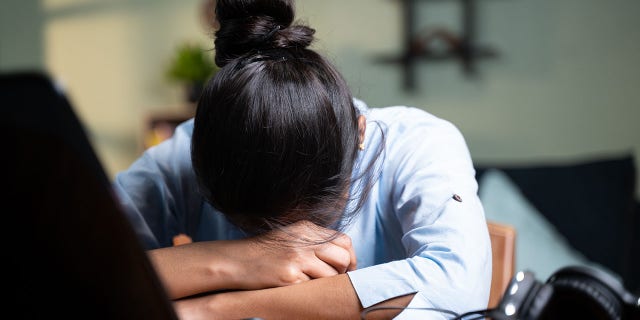Two healthy middle-aged females returned to almost their normal daily activities after taking daily antihistamines for long COVID, according to a recently published case report.
The researchers noted long COVID is a chronic condition when patients who are infected with the virus have persistent symptoms that extend beyond the typical time frame for the infection to resolve, but the illness currently doesn’t have any evidence-based treatments to guide how to manage it.
“Most patients tell us that providers have not recommended anything that has helped,” said co-author Melissa Pinto, associate professor at the University of California, Irvine Sue and Bill Gross School of Nursing.
The report describes the first case of a White woman in her 40s with a past medical history of Raynaud’s phenomenon (a condition where there is decreased blood flow to the fingers), polycystic ovarian syndrome (a hormonal disorder of the ovaries), and a milk allergy.
She is likely one of the first known people to be infected with COVID-19 in the United States, according to ScienceAlert.

Sick young woman lying on the couch and holding her head with hand.
(iStock)
Within 72 hours of being diagnosed, the woman, who is a healthcare worker, complained of “profound fatigue, malaise, and headache,” which then progressed to a rash that spread over her back one week after her initial symptoms, per the report.
She had a partial resolution of symptoms after 24 hours, but two months into her diagnosis, she began to feel brain fog with a relapse of symptoms, which prompted a comprehensive workup that was unrevealing, according to the paper.
VALENTINE’S DAY 2022 BY THE NUMBERS
After accidentally ingesting cheese for which she has a known allergy approximately six months into her illness, she took 50 mg of the antihistamine diphenhydramine, but also incidentally noticed considerable relief of her ongoing fatigue.
She restarted diphenhydramine three days later when her symptoms returned, so she continued to take it on a daily basis for six months until her doctor switched her to 25 mg of hydroxyzine with instructions to titrate it until resolution of symptoms, according to the case report.
She eventually increased it 50 mg, reporting 90% back to baseline functional status, which she has sustained without a relapse for currently nine months.

The report described a similar case of a middle-aged White female teacher who had an unremarkable past medical history except for asthma and seasonal allergies that she treated with the antihistamine fexofenadine.
HEART DISEASE RISKS RISE WITH SOCIAL ISOLATION AND LONELINESS: BY THE NUMBERS
She likely was infected with COVID-19 from her child, who also had symptoms compatible with the virus, but her symptoms persisted for nine months accompanied by an intensity of fatigue and difficulty concentrating, per the report.
But when she ran out of her fexofenadine 13 months into her chronic illness, the authors noted she decided to take 25 mg diphenhydramine instead by chance, and the following day she had complete resolution of brain fog and fatigue.

Young woman sleeping by closing laptop while working. Fatigue caused by long-COVID.
(iStock)
So she continued to take the diphenhydramine daily, and she continued to notice a clinical improvement of her brain fog, fatigue and abdominal pain as well an improvement in her loss of smell, according to the case report.
She has been taking 25 mg diphenhydramine at night and 180 mg fexofenadine in the morning for more than 60 days with a return to a 95% return to baseline functional status, the report said.
One limitation of the report is that more research is needed to generalize to a larger population given it is only a case study on two patients, according to ScienceAlert.
“Patients tell us they wish more than anything that they could work and do the most basic activities they used to before they got sick with long COVID. They are desperately searching for something to help them get back on their feet,” Pinto said.
“The possibility that an easy-to-access, over-the-counter medication could ease some of the [long COVID] symptoms should offer hope to the estimated 54 million people worldwide who have been in distress for months or even years.”